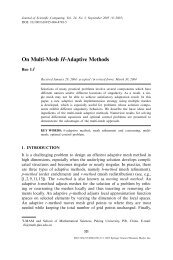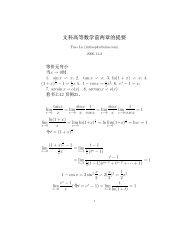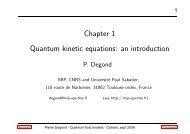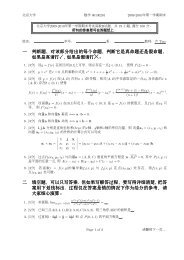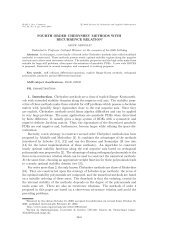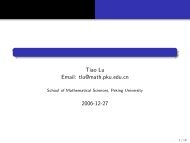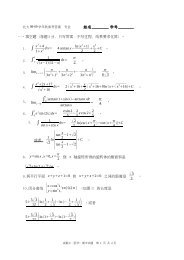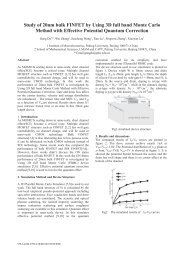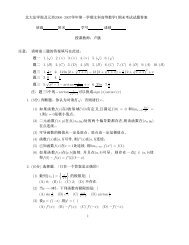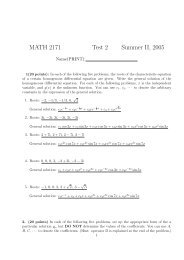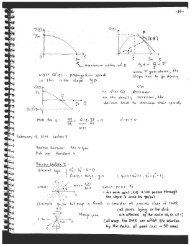Abstract
Abstract
Abstract
You also want an ePaper? Increase the reach of your titles
YUMPU automatically turns print PDFs into web optimized ePapers that Google loves.
CHAPTER 3. BIFURCATION ANALYSIS 61<br />
the base time to be 1, then we can model the relative time T ∗ ( ¯ N) for the scalability<br />
runs as<br />
T ∗ ( ¯ N)= ¯ S ¯ N β +(1− ¯ S) ¯ N β−1<br />
which we can then use to get an estimate of the serial fraction of our code from the<br />
scalability data.<br />
From the scalability data, we have two data points (since the base case will be<br />
scaled to T ∗ = 1 and for all possible parameter values, the model has T ∗ (1) = 1).<br />
Since we have two data points and two parameters to fit, the parameter estimation<br />
is a solution to a nonlinear equation instead of a nonlinear least squares problem.<br />
Therefore, we used a Newton code from [19] to solve the two-dimensional problem.<br />
We did two separate nonlinear solves with this code, using in one case the total run<br />
times and in the second case using the average function evaluation times. For the<br />
total run time case, the values of ¯ S and β were ¯ S =4.33 percent and β =1.2948.<br />
The values of ¯ S and β were ¯ S =4.78 percent and β =1.2915 in the average function<br />
evaluation time case.<br />
From both the parallel efficiency and scalability results, we estimate that about 5<br />
percent of our parallel code is serial. The 5 percent serial code would be troublesome<br />
if we were to scale this problem to thousands of processors, but we do not need such<br />
a large-scale computing environment for the number of unknowns we are solving, and<br />
the 5 percent serial code does not hurt us that much on tens of processors.




